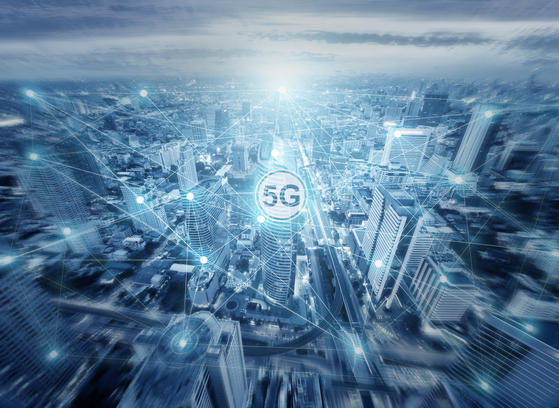Network-wide zero touch automation of all functions is, for now, an ideal rather than a reality. And yet the question is not whether the self-healing network – one that not only acts on faults but accurately predicts the potential for faults – is possible. It’s more about the fact that numerous drivers will make zero touch automation – or something close to that ideal – a reality.
What are the challenges involved?
But both operators and vendors are aware that a few obstacles must be overcome first. First and foremost, the advanced automation and robotics that underpin zero touch automation will mean changes to required skillsets. Yes, some jobs will be automated, but network capabilities will grow, and new skills will be required. Are operators and vendors ready to support training in the new skills – like data analytics, 5G network management, software engineering – these demands require?
And is there buy-in from the people that will be working in a zero-touch environment? The best automation orchestration in the world is meaningless if it's not getting traction withF the workforce.
It would of course help if everyone knew what they wanted from zero touch – and how to get there. One old-fashioned, but still effective approach is to have a blueprint, which asks, and ideally answers, relevant questions.
For example, what are the demand drivers? What does the customer want? What does the business want from operations? Where is technology taking us? How will cloud-native containers, microservices, densification and distributed cloud change business models?
Are we ready? What about frameworks? Do we speak a language that is understood by all parties? What is the regulatory and security landscape? And finally, how do we change and adapt our operational thinking, so that we can translate that into the automation we need? What, in short, do we want from our transformed operations?
Data and zero touch automation
Then there are the enablers. Data is clearly the oxygen that drives automation. Can it be effectively collected, processed, managed, correlated, and even (given data governance) accessed?
There’s going to be a lot of it. The more networks and their functions become truly cloud-enabled the more dynamic and ephemeral information will be. Are we ready? How do we apply analytics and AI/ML to a fast-growing data lake? And most importantly, how do we accelerate the time taken to elaborate data and create valuable information and actionable points related exactly to the information that the network is providing?
For now, humans will still be involved. A zero-touch process will solve a particular set of problems given a certain amount of certain data inputs. And, like an engineer on a continuous learning curve, it will learn all the time. But as we try to give machine learning and deep learning a higher role, we’ll still have to rely on our experts to manage the process – ideally by allowing them to view the whole network and how it is performing.
That’s because the traditional siloing of functions and departments will slow down problem solving and innovation. By contrast, mapping of services end-to-end and permitting real-time 360° observability will not only permit earlier intervention but will support the move towards better, and more automated, processes, procedures, work assumptions and life cycle management.
5G considerations
Inevitably 5G will add new challenges. We will need to organise and agree SLAs for both established requirements like voice quality and new services like service fulfilment of the network slice.
We will need, in short, to answer the same questions but with much more powerful tools and options as the network becomes more automated. What does the customer want? How does a B2C customer differ from a B2B customer? What are we building? How do we monetise it? What’s the business model? How, in fact, do we manage a future of densification, distributed cloud, edge cloud, AR and VR – a 5G future?
As we have noted, new services will be part of the new 5G and 6G landscape. Selling them to end users and businesses will be central to a CSP’s success. If the services don’t match the performance promised customers will go where the services are reliable. Zero touch automation will be part of a process that ensures that reliability. But new services still must be managed effectively on the way to the full automation ideal.
So, given all these challenges why do we believe we will eventually get to a system that can process vast quantities of information across a network and act on them effectively, precisely pinpointing issues and opportunities well in advance and acting on them with limited human intervention?
Partly because we’ll have to. AI and ML will help systems to learn and improve performance, but this is an unavoidable requirement given both the increase in complexity of both networks and their changing service offering capabilities.
Massive IoT, network slicing and multi-player mobile gaming are just a few examples. Others, many of which we haven’t thought about yet, must surely follow. Automation will aid the process of finding and managing these as they grow in number. In any case, once it starts automation can’t stop; the alternative is an unsustainable number of engineers trying to keep an eye on thousands of performance counters.
Zero touch and closed loop automation to manage both the services and the networks that offer these services are a competitive and financial necessity as well as an enabler. Technology will improve the customer experience and help create value and differentiation in the services that are provided.
The focus here has been on services. It’s true that hardware, data centre cooling or cell towers, for example, are already benefiting from automation. But services, and service assurance, are more demanding of the automation process. As we approach 5G and a cloud-centric future we will be under pressure to find, monetize and guarantee the performance of new services. There are a lot of variables for automation to manage. But automation will be an essential part of the service environment for that very reason.
That is at least some of the thinking behind our new assurance platform. And yes, automation of processes is part of it, even zero touch in the form of automated zero-touch configuration for network healing actions based on flexible configurable automation workflows.
How can we help?
In fact, many of the challenges mentioned above – cloudification, 5G, new services, service monetization, SLAs, 360° visibility, data correlation, cross-domain troubleshooting, predictive analysis and more – are tackled by Infovista Ativa™, our new suite of cloud-native applications for automated assurance and operations of cloudified, fixed, IP and wireless networks.
So as an industry are we there yet? Not quite. But we know where we’re going, we have a very good idea of how to get there – and we are on our way.
To find out more about how the new cloud-native Ativa™ suite is bringing AI-powered zero touch to Automated Assurance and Operations, download the whitepaper Assuring advanced cloudified networks – why an integrated approach to automated assurance and operations is essential.
The insights in blog are drawn from industry conversations at the recent FutureNet World event (London: 10-11 May 2022), where Infovista joined senior representatives from BT and Telenor to discuss “Automation Now: Role of automation in running a network with disaggregation technology”. To watch the on-demand recording, please visit the event page: https://futurenetworld.net/events/futurenet-world/










